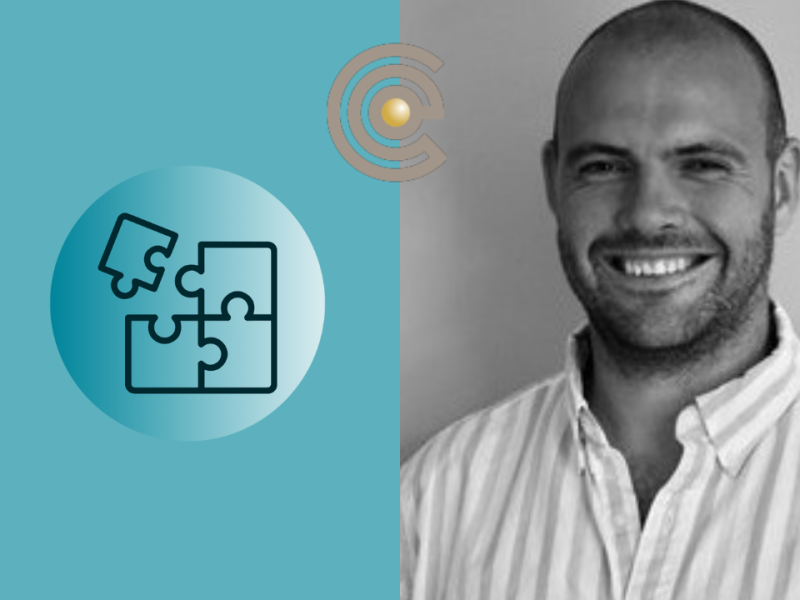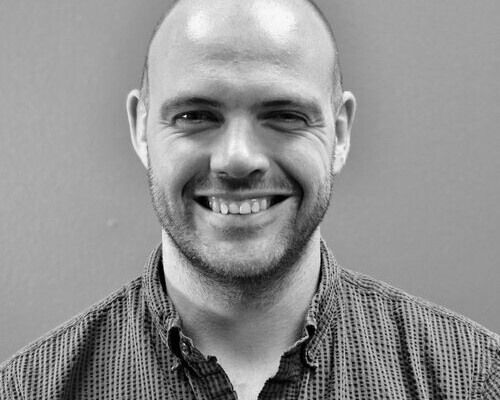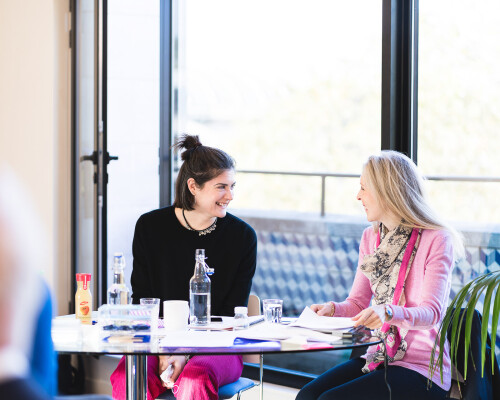We recently spoke with Andy about the many facets of neurodiversity and how business leaders can create a more neuroinclusive culture.
This article is adapted from our full podcast episode, which you can listen to HERE
Andy is the founder of Welcome Brain, a neurodiversity consulting firm. The rationale behind Welcome Brain is that support for neurodivergent individuals within organisations improves outcomes for individuals, leaders, and the organisation as a whole.
1. What are the barriers for neurodivergent people in the workplace?
‘’About 70% of working age people with Autism Spectrum Disorder are unemployed, because they don’t get hired in the first place. For neurotypical people it’s 14%. A lot of that comes down to jobs postings. Companies will say: we’re a dynamic and ever-changing workplace…which is the last thing a person with ASD wants to work in.
The interview process hires a lot based on soft skills, and people who are neurodivergent may not thrive in those situations. If they are able to mask and get through the interview process, they still have chronic discomfort and don’t really fit into a lot of workplaces. Anxiety is a result of this discomfort.
A lot of neurodivergent people have lower productivity than they could have, as the office environment is not really set up for them, they tend to get distracted. There’s also a sense of shame as to why they don’t fit in, especially if they don’t have a diagnosis.’’
2. Tell us about the value of neurodiversity in business
“Every business is tasked with problem solving, that’s ultimately what every business does.
Innovation and creativity involve thinking in new and different ways, and that is literally what neurodiversity means. Silicon Valley is an incredibly neurodiverse place. Fields like tech, STEM, the arts and the creative industries skew often towards the neurodiverse. Innovative businesses are already neurodiverse.
Simon Baron-Cohen’s thesis is that as a species we evolved and innovated because of the autistic amongst us. People with ASD tend to be better at systemic thinking and finding patterns. So there’s more than just your business at stake here, there’s the future of humanity.
50% of employees at NASA are dyslexic. So if your goal is anything less than landing on the moon, then you can definitely afford to hire neurodivergent people!
The benchmark stat is 20% - that’s the percentage of the population that’s neurodiverse. So if you’re ever running an audit of your business, your employees, your C-suite, your Board - if it’s anything less than 20% then you should be doing something differently.
If you create a neuroinclusive organisation, it benefits everybody, not just the neurodiverse people in your organisation. So if you’re passively excluding people, then your organisation is just going to be badly run and not function as well as it could do. I don’t think people need to see neuroinclusion as a sacrifice. It really is hand-in-hand with what is good business practice.”
3. How can leaders create a neuroinclusive culture?
“For someone who is rising in a corporation, self interest is the primary element, but I think that empathy is really important too. The old adage about having two ears and one mouth – you should be listening twice as much as you should be talking.
Good managers can create neuroinclusive environments whether they know it or not, if they have those soft skills and they communicate well, and they allow people to personalise and customise their experience.
There’s often a lot of shame around outing yourself as neurodivergent, so having a good line of communication with employees is essential.
If you have an ‘open door’ policy, you put the onus on the individual to communicate with you. It’s one of the most passive ways you can communicate. You require more communication from people who struggle the most with communication. So you have to be more active and dynamic at reaching out to people.
But how do you have that first conversation? It can sound quite accusatory to approach an employee and say: are you neurodivergent? So the best way to start it is to have a company-wide conversation and ask: is there anybody with inputs they would like to give? Simply by saying: as a company this is something we are going to work towards, you start that conversation, allowing people to engage.’’
4. What are the dangers of masking and burnout?
“Neurodivergent people struggle with social cues and social environments a lot more. Masking is about making other people more comfortable, so it exerts a real toll. The cost can be huge – employees can leave if they are burned out. It takes 28 weeks to replace an employee up to the same level of productivity as they were before. The cost to replace an employee on an average salary is £30,000. The human cost is less tangible. Presenteeism and absenteeism are also real dangers.
However, if you create a neuroinclusive environment then your teams are a lot more productive. A neurodiverse company is 30% more productive. Neurodivergent people can make decisions 50% faster if involved in the decision-making process."
5. How can we make meetings more neuroinclusive?
“There are two things you could change immediately to improve meetings for neurodivergent people:
Firstly, send the agenda in advance, ideally with timestamps on it. ‘This is what we’re going to talk about in these sections’. This allows people to prepare. Neurodivergent people sometimes struggle with ‘on the spot’ thinking. Meetings can be brutal if you don’t know the end point, or if you get off-topic.
Secondly, make sure everyone has a chance to speak in the meeting, not just the loudest ones. If someone isn’t given the chance to speak, then there’s no point in them being there.”
6. How can people with a recent diagnosis best support themselves at work?
“There’s an element of relief in getting a [later-life] diagnosis. There are a lot of retrospective scenarios you need to work through. You’re not the ‘clumsy kid’ or the ‘dumb kid’ anymore. Give yourself a break, don’t get angry and see it as an opportunity.
Those with a later-life diagnosis often have issues with metacognition (being aware of ones own thinking), because they’ve been trying to figure out how to conform to office environments. A diagnosis can be freeing, but one can sit back and say: this is how I work best, and it’s no better or worse than anyone else. Limitations can be turned into quirks. So if you can’t work with a load of noise in the background, you don’t have to suffer through it, it becomes legitimate.
A lot of it comes down to executive function. This is all about how you manage yourself. Executive function can relate to time management, your ability to prioritise tasks, and switch between tasks.
So if you’re talking about leaders or CEOs, a lot of the focus is how you manage other people, but ultimately you need to manage yourself.”
7. What guidance do you have for neurodivergent Executives?
“There are a lot of neurodivergent entrepreneurs, but there’s only a few who have risen within corporate environments. Neurodivergent people don’t get promoted as much as neurotypical people. It’s the final frontier. The networking, the personal branding, the social skills required - these are things that neurodivergent people struggle with the most.
Self-assurance is absolutely critical, as is metacognition - understanding yourself and how your brain operates. Be very clear with yourself about your strengths and your weaknesses. Do a personal audit and say: what are my ‘weaknesses’ and how can I reframe them as strengths? For example, if you struggle to work past 5pm, you might be very productive in the morning. If you build that foundation of who you are as a worker, you’re less likely to struggle with the conformity of rising within a corporate environment."
8. How can businesses send a message of inclusion to colleagues, customers and stakeholders?
“We have a certification scheme at Welcome Brain, so that businesses can demonstrate they are neuroinclusive. It helps with hiring, recruitment and speaking to customers who want to buy more ethically.
Your internal communications need to be transparent, clear and consistent. With external marketing, people want to see examples of neurodiverse people within your organisation. Every time you put a neurodivergent person on the Board of your company, it shows employees that they can reach that level themselves. It’s good to create case studies which show you are a neuroinclusive business, and change the way that people talk and think about your business.’’
9. What's your take on flexible working?
“The pandemic showed that working from home was not a rare luxury, it was a fake scarcity. It’s perfectly plausible for people to work from home. There are loads of studies that show working from home increases job satisfaction. The ‘return to the workplace’ argument is that there are lots of soft skills and informal networking that can be done in an office environment. But those conversations are the least accessible to neurodiverse people. How valuable are those watercooler moments when you are excluding people from them?”
10. What's the cost of NOT being neuroinclusive?
“If you have a purely mono-culture, neurotypical organisation, then you’re in danger of groupthink. Your organisation can ossify and not develop anymore. You need creativity in a business and intellectual diversity – otherwise, your organisation won’t as function as well, and you’ll lose out on clients. You won’t be able to hire good staff, clients and customers will know that you’re not built for them. If all your competitors are publicly neuroinclusive, you’ll be selected against. Maybe you’ll hire neurodivergent people by accident, but they won’t be as productive and they won’t stay as long. You’ll have to replace them more regularly.”
Explore Andy's work





